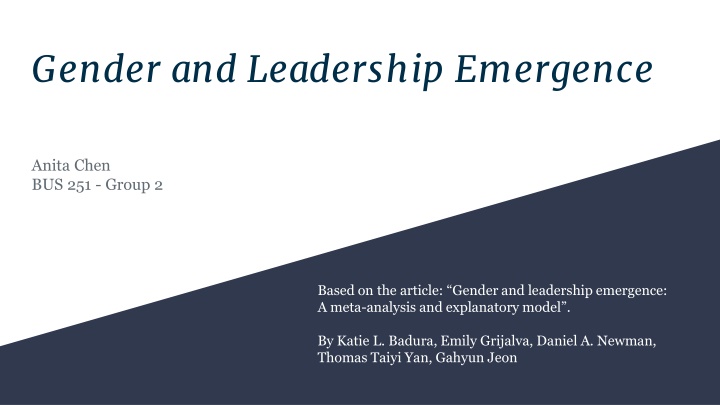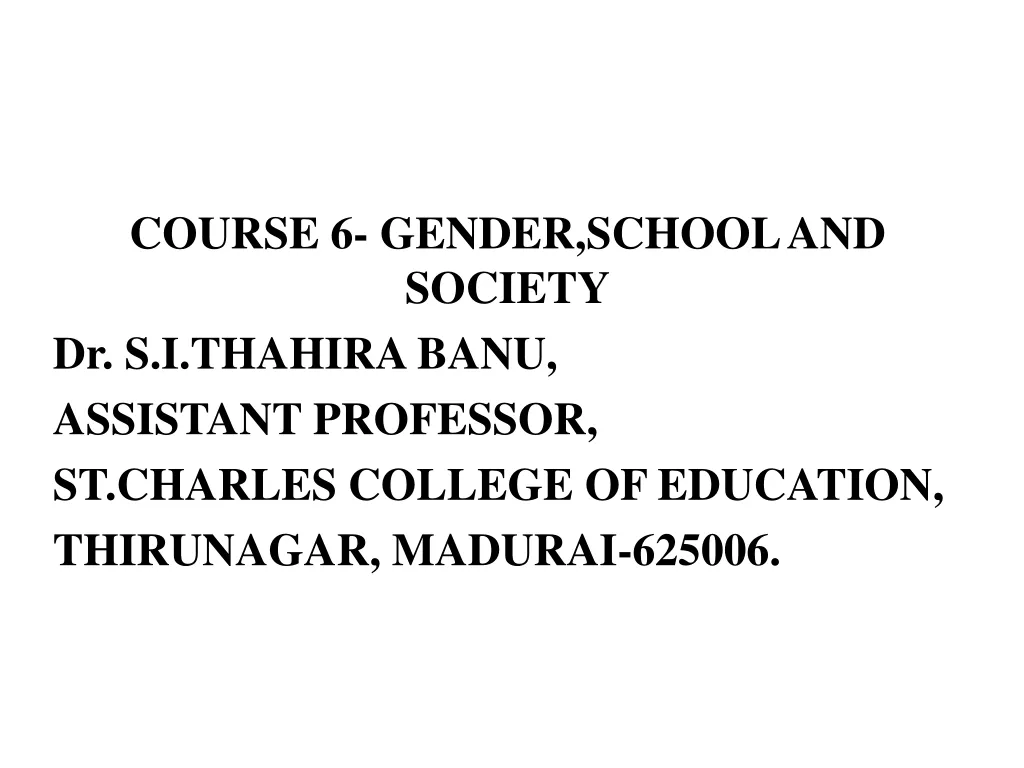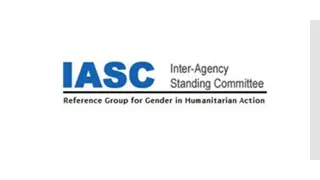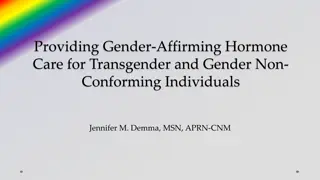
Gender Disparities in Leadership Emergence: Research Insights
This article delves into the reasons behind the lack of women in top business leadership positions, exploring how gender stereotypes and traits impact leadership emergence. Research findings show a significant link between agentic traits, communal traits, and participation in discussions on leadership emergence, shedding light on the gender gap in leadership roles.
Download Presentation

Please find below an Image/Link to download the presentation.
The content on the website is provided AS IS for your information and personal use only. It may not be sold, licensed, or shared on other websites without obtaining consent from the author. If you encounter any issues during the download, it is possible that the publisher has removed the file from their server.
You are allowed to download the files provided on this website for personal or commercial use, subject to the condition that they are used lawfully. All files are the property of their respective owners.
The content on the website is provided AS IS for your information and personal use only. It may not be sold, licensed, or shared on other websites without obtaining consent from the author.
E N D
Presentation Transcript
Gender and Leadership Emergence Anita Chen BUS 251 - Group 2 Based on the article: Gender and leadership emergence: A meta-analysis and explanatory model . By Katie L. Badura, Emily Grijalva, Daniel A. Newman, Thomas Taiyi Yan, Gahyun Jeon
Why arent there more women business leaders? Women are: 46.9% of the workforce (Catalyst, 2019) 4.8% of Fortune 500 CEO s (Pew Research, 2018) Why? Leadership Emergence: Whether and to what degree an individual is considered a leader by others.
Previous Research Perception of being leaderlike, leads to higher job performance and promotability. Participation in group discussion is one of the dominant predictors of leadership emergence. Men associated with breadwinner , women associated with homemaker . Men more likely to be chosen for managerial roles. Stereotype changing: more women occupying managerial roles.
Research Question Why do men emerge into leadership roles more frequently than do women? Traits of agency Dominance and assertiveness Traits of communion Warmth and nurturance Participatory behavior in discussions Providing suggestions and offering opinions
Research Methodology Gathered 59 studies, measured them on three areas: Agentic traits Communal traits Participation in discussion Controlled for the following factors: Date of publication Length of interaction Social complexity of task (interpersonal skills)
Research Results All hypothesized paths were statistically significant in the expected directions: However, negative path from communal traits to participation (? = .05, p < .05). Of note, communal traits were detrimental to leader emergence (? = .15, p < .05). Hypothesis: Communal personalities take on a listening-facilitating role, rather than a speaking- commanding role, typically associated with leaders.
Research Results When controlled for publication date: Association between agentic traits and leadership remained strong Detrimental effect of communal traits and leadership weakened Meaning: Over time, communal traits are seen less negatively.
Research Results When controlled for interaction time: Positive agency-leader link AND Negative communion-leader link weakened Meaning: first impressions are not always accurate!
Research Results When controlled for social complexity: No statistically significant influence on gender gap Meaning: both men and women can have excellent (or terrible) interpersonal skills
Take Home Message Perceptive education vs. behavior modification: We must learn to respect communal traits in both men and women Education on the agency bias in selecting leaders: Extended interaction so stereotypes can fade Conducting multiple interviews increases accuracy Can lead to choosing better candidates Training to create collaborative discussion: Draw out ideas through questions => better ideas Amplify opinions or suggestions Respectful dialogue
If we want a world with greater equality, we need to acknowledge that women are less likely to keep their hands up. We need institutions and individuals to notice and correct for this behavior...and women have to learn to keep their hands up. - Sheryl Sandberg, COO of Facebook






















